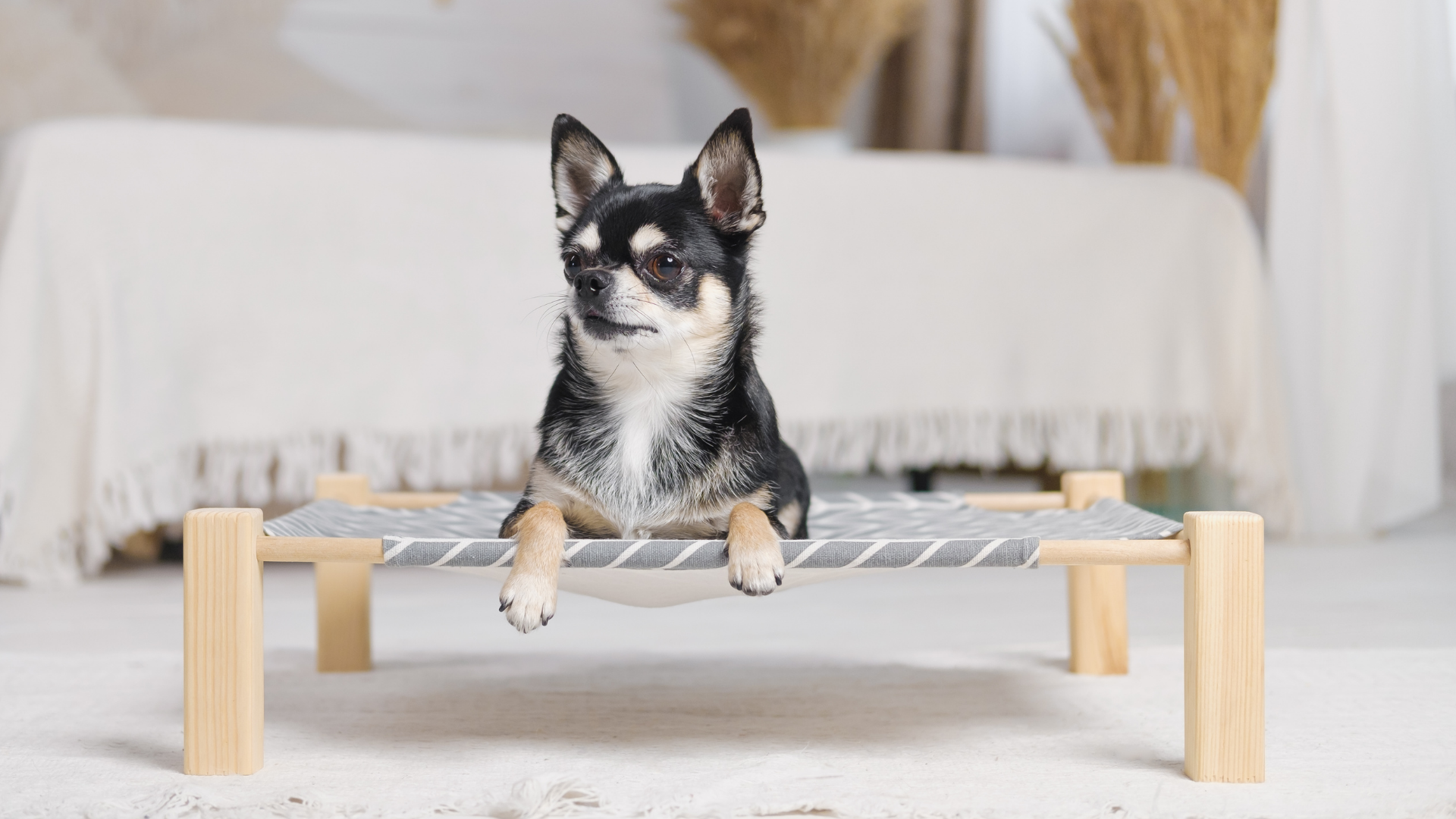Place training is an exercise used to build a targeted duration in a ‘down stay’ position. Put simply, the goal is for your dog to develop an association with the ‘place’ (bed, mat, crate, any other comfy object) that represents calm.
What can place training be used for?
Place training is a fantastic exercise for your dog to learn that gives them a place to relax and a point of safety. Here are just some of the reasons it can be useful:
- Keep them out of the kitchen or out from under your feet
- Give them a spot to relax which helps prevent over-arousal with guests coming and going, before heading out for a walk, or general busy movement in the home or out & about
- Improving impulse control
- Aid with socialization in young dogs
- Develop independence
How do I teach place training?
Before you start, you’ll need a few things. You’ll need:
- Some yummy treats or even better – use your dogs’ meals,
- A leash
- A bed/mat or comfy item for your dog to lie on
When you start place training, repeat each step several times, but you don’t have to complete the whole process in one session while you’re training your pup. Ensure your pet understands and is successful at each level before progressing.
Level 1 – develop the association that good things happen on ‘place’
- Gently guide your dog using the lead to the ‘place’
- Mark “good” and reward once four feet are on
- Give your dog a release cue such as “free” which means they can come off the item (you may need to encourage them off)
- Repeat until easily walking on
Level 2 – sit tight toward the goal
- Introduce a verbal cue such as “bed”, “place”, “mat” – any word will do, but must be same word each time and isn’t used in general conversation
- Guide on and wait for your dog to sit (wait a few seconds for them to think about what you may want, if no response after a few seconds, ask once for a sit)
- Mark “good” and reward once bottom is down
- Continue to treat a few times whilst holding a sit
- Give your release cue “free” and walk your dog off the item
- Repeat until your dog freely walks on and offers to sit straight away
Level 3 – a drop more difficult
- Following the same steps as level 2
- Except instead of sitting, wait for your dog to lay down (again, give them a few seconds to think what you may be wanting from them, and ask if not done after a short time)
- Give your release cue “free” and walk your dog off the item
- Repeat until your dog freely walks on and offers to lay down straight away
Level 4 – add in your duration, distance, and distractions
Add these one at a time
Duration: time between each reward
- Following the same steps from level 3
- When adding duration, stay close and vary the time between treats (1 second, 5 seconds, 3 seconds for example)
- Mark “good” before each reward
- If they get up from position, start this level again and work more at shorter duration between rewards
Distance: distance between you and your dog
(This will coincidentally include duration).
- When adding distance, take one step back
- Mark “good” once at the distance and reward back at your dog
- Repeat at this distance for several repetitions, then increase to two steps back
- Continue adding the steps away as they are successful at staying on place
- If they get up from position, start this level again and work more at less distance
Distractions: anything that could be a distraction to your dog away from the bed
- When adding distractions, use yourself to start with and stay close
- Create a subtle distraction such as waving hands or gently moving your arms and legs
- Mark “good” once completing the distraction and reward back at your dog
- Continue with subtle distractions no further than your furthest successful distance
- If they get up from position, start this level again and work at a short distance, less duration or less intense distraction
Place training is a constant work in progress in a lot of different environments under all different conditions. Dogs will have off days, so if they are having a bit of trouble, go back a level or two. Keep at it and this exercise will pay off!
References
Karen Pryor – https://www.clickertraining.com/node/3308
American Kennel Club (AKC) – https://www.akc.org/expert-advice/training/teaching-go-to-your-place/
Australian Dog Lover – https://www.australiandoglover.com/2016/10/dog-mat-training-in-3-simple-steps.html
Pet insurance can help by covering a portion of the eligible vet bill if the unexpected happens. Because it is difficult to predict the costs of veterinary care, it can help to have measures in place to help prepare for the unexpected. Check out our partner network and explore our policy tools to find a pet insurance policy.
Not all conditions or items are covered by Pet Insurance. Refer to the applicable Product Disclosure Statement for information about coverage and exclusions.








